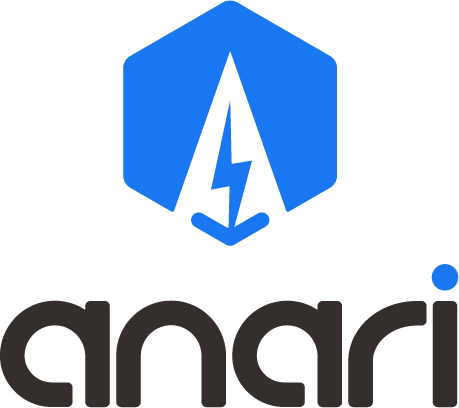
Executive Summary
Ireland’s electric vehicle (EV) transition is underway, powered by robust policy, growing vehicle uptake, and accelerating infrastructure expansion. As of late 2023, Ireland had ≈2,825 public and semi-public charge points, with a total EV parc of ~90,000 vehicles, translating to a 31:1 vehicle-to-charger ratio—well above the EU benchmark of 10–15:1. Strategic investments, including a €100 million state-funded infrastructure push and motorway grants under ZEVI, aim to install high-powered chargers every 60 km. Private networks (ESB ecars, EasyGo, Ionity) are scaling fast. Yet challenges persist: high electricity prices make Irish public charging among Europe’s priciest; inconsistent user experience; grid and permitting bottlenecks; and infrastructure gaps in rural/tourist regions. This report analyzes across six key pillars, offering rigorous reasoning and policy-aligned recommendations to position Ireland as a model for sustainable mobility.
1. National Policies & Regulatory Framework
1.1 Climate & Adoption Targets
-
Driven by Ireland’s Climate Action Plan 2025, which sets targets for 845k EVs, 95k light commercial vehicles (LCVs), 3.5k HGVs, and 1.5k e-buses by 2030.
-
ZEVI (Zero Emissions Vehicles Ireland), founded 2022 under the Department of Transport, spearheads infrastructure planning.
1.2 Infrastructure Strategy & Grants
-
EV Charging Infrastructure Strategy 2022–2025 outlines deployment across four segments: home/apartment, residential neighborhoods, destination, and motorway/en-route. It allocated €100 million for public charging infrastructure.
-
ZEVI National Road Grant Scheme Phase 1 funded 131 ultra-fast chargers at 17 motorway sites (approx. 45 km spacing) by end-2025.
-
Phase 2 (LDV scheme): grants up to 70% (max €300k/site) for fast charging on single carriageways, targeting density of no more than 60 km.
1.3 Incentives & Tax Support
-
BEVs benefit from VRT relief (up to €5k for OSMP < €40k), lowest motor tax band, and home charger grants (up to €300).
-
Budget 2025 extends Benefit-In-Kind (BIK) exemptions, adjusts thresholds, and proposes a reviewed BIK rate from 2026.
1.4 Regulation & Standards
-
AFIR (EU 2023/1804) mandates interoperable, ad-hoc accessible chargers with transparent pricing. Ireland consulted on a National Policy Framework to align public infrastructure.
-
VEHI deployment guided by Universal Design Guidelines and OCPP-based platform interoperability.
Summary: Policy is coherent, financially backed, and EU-aligned, positioning Ireland for infrastructure scaling. Continued grant optimization and coordination will be critical to meeting infrastructure goals.
2. Market Size & Growth Trajectory
2.1 Infrastructure Scale & Expansion
-
Public/semi-public charging points: 1,114 (2020), 2,244 (2022), 2,825 (2023), CAGR ~36%.
-
Vehicle-to-charger ratio remains high—31.2:1 vs ideal 10–15:1.
-
Power capacity: ≈70 MW end-2023; needs scaling to 214 MW by 2025 and 712 MW by 2030.
2.2 EV Fleet Growth
-
Passenger EVs: 15,877 (2020) → 88,193 (2023), total ~92k.
-
Forecasted 131k EVs by end-2025 and near-1 million by 2032 (~29.2% of fleet).
2.3 Investment Landscape
-
Government committed ≈€100 million (2022–25) for public infrastructure; ZEVI grants (70% cost share) for motorway fast chargers.
-
Private investment by ESB ecars, EasyGo, Ionity, Tesla, and joint ventures like SSE–TotalEnergies aiming to build 3,000 fast-charge points in UK & Ireland.
Summary: Infrastructure and EV fleet are experiencing exponential growth, yet capacity remains imbalanced relative to ambition. Financial backing supports scaling, but urgent acceleration is needed.
3. Development Status & Infrastructure Models
3.1 Public Network & Backbone
-
ESB ecars operates ~1,700 public points; total public network >2,400.
-
Motorway and major-route fast charging—131 ultra-fast points for 17 sites by 2025; additional rollouts scheduled via Phase 2 grants.
-
National hub coverage follows 60 km spacing to meet AFIR mandates.
3.2 Private & Shared Infrastructure
-
EasyGo Shared Charging Network piloted in Dublin suburbs, enabling homeowners to share chargers publicly; free units provided.
-
Fleet and workplace charging supported by ESB, EO Charging (fleet-focused), and GoPlugable rental units, leveraging platforms for ease of access.
3.3 Technology & Interoperability
-
Platforms: ESB ecars, EasyGo, PlugShare, Chargemap offer unified access via apps/RFID/payment.
-
Interoperability is tax-funded and mandated under AFIR; national data consultation supports transparency and roaming.
Summary: Ireland has laid foundational infrastructure. Expansion must balance public/private deployment, technology integration, and equitable coverage.
4. Major Actors & Profiles
4.1 ESB ecars
-
Largest public CPO (~1,700 points), comprehensive app, subscription models, subscription & credit-card payments.
-
Pricing: 56 c/kWh (slow), 64 c/kWh (fast), 68 c/kWh (high-speed); among Europe’s most expensive charging.
4.2 EasyGo Shared Charging
-
Pilot of shared private chargers via homeowners; free units; aims to fill residential-public gaps.
-
Community-first, scalable model—pilot in Dingle, Finglas, Phibsborough until 2025.
4.3 Ionity
-
Pan-European HPC network; 6 stations in Ireland with 350 kW CCS ultra-fast chargers.
-
Enables cross-border corridor charging.
4.4 TotalEnergies–SSE (Source JV)
-
Joint venture planning 3,000 fast-charge points across UK & Ireland (including Ireland), powered by renewables; targeting 150 kW DC capacity.
4.5 EO Charging
-
UK/Ireland fleet-focused manufacturer/operator; cloud-based charge management; over 60k installations globally.
4.6 Tesla Superchargers
-
Select sites in Ireland with Tesla proprietary connectors; app-based access.
4.7 Other Retailers & CPOs
-
Applegreen Electric, Circle K, Maxol, and local hotel chains engaged via ZEVI grants to deploy onsite chargers.
Summary: Ireland hosts a balanced mix of utility, private, and JV operators. Innovation in home and shared charging introduces flexibility, while infrastructural scale grows via public-private synergies.
5. Opportunities: Strategic Growth Avenues
5.1 Infrastructure Scale-Up & EU Mandate Compliance
-
Ireland must escalate from ~2,800 points to 6,210 and MW capacity from 70 to 214 by 2025 to meet AFIR; motorway grants and private investment can close the gap.
5.2 Shared & Residential Charging
-
EasyGo pilot shows potential in unlocking charger access without off-street parking.
-
Condominium charging requires scalable, subsidized rollouts (Flemish-style model replication recommended).
5.3 Fast &Saving Corridors
-
Source JV and Ionity are expanding HPC networks; grants supporting 60 km fundamentals.
-
Corridor buildout across east–west and tourist routes ensures range confidence.
5.4 Fleet & Commercial Electrification
-
Light commercial EV sales nearly doubled to ~1,700 units in 2025; fleet charging required.
-
EO Charging devices meet fleet demand with integrated charging management.
5.5 Interoperability, Data Transparency & Market Innovation
-
AFIR-compliant interoperable networks and centralized data-sharing schemes improve consumer trust and choice.
5.6 Renewable & Grid Integration Potential
-
Ireland’s high-voltage renewable grid (wind/solar) supports smart charging; V1G/V2G trials are emerging.
-
Opportunity to balance demand and enable ancillary services.
Summary: Ireland’s EV charging opportunities span policy-driven targets, shared economy models, corridor fast charging, fleet electrification, and digital innovation—each central to long-term success.
6. Challenges: Structural Barriers & Operational Risks
6.1 Infrastructure & Capex
-
High cost per fast charger (~€50–150k) strains budgets; ESB’s pricing partly reflects capex/expenditure.
-
ROI is uncertain with utilization still maturing (30% drivers rarely use public charging).
6.2 Grid & Permitting Constraints
-
MW capacity must triple by 2025; local grid upgrades and 1–3 year MV/LV connection delays present rollout drag.
6.3 Pricing & Affordability
-
Public charging is Ireland’s second most expensive in Europe (€6.66 per 100 km).
-
ESB’s high tariffs vs home charging leads to low traveler incentives; pricing transparency varies.
6.4 Geographic Coverage Inequality
-
Rural and tourist route gaps persist; corridor targets only partially met (35% AFIR compliance).
-
Overcrowding in Dublin vs underutilization elsewhere; area-specific planning needed.
6.5 User Experience & Reliability
-
App fragmentation, reliability issues, and overstay fees (e.g., €8) seam driver frustration in community forums.
-
30% users rate public charging poor; inefficient access rules diminish trust.
6.6 Policy Risk & Market Fragmentation
-
EV sales slowed 23.6% in 2025 due to affordability, charging concerns, and residual value fears.
-
Markets expect policy continuity; phasing of grants or tax incentives risks adoption slowdown.
Summary: Ireland’s journey confronts real capex, grid, pricing, coverage, and adoption challenges. Solving them will require stakeholder alignment and targeted interventions.
7. Strategic Recommendations
-
Grid & Capacity Scaling
-
Fast-track MV/LV connection approvals; co-invest in grid upgrades with CPOs and ESB Distribution.
-
Make ZEVI grants contingent on grid-readiness.
-
Pricing Transparency & Tariff Reform
-
Mandate ad-hoc pricing display via app/minutes/kWh breakdown.
-
Introduce off-peak discount rates to incentivize V1G and flatten load.
-
Rural & Corridor Prioritization
-
Roll out highway-targeted fast-charger grants per motorwayFAC motorway plan; fill tourist route gaps.
-
Subsidize rural CPOs to serve underserved zones.
-
Expand Shared & Residential Charging
-
Scale EasyGo model; subsidize private homeowners to join public networks.
-
Mandate EV-ready apartments in new builds; provide grants for installation.
-
Support Fleet & Commercial Uptake
-
Offer commercial charging mini-grants to reduce entry costs.
-
Partner with EO Charging and fleet operators for integrated solutions.
-
Enhance User Experience & Reliability
-
Standardize national roaming apps (EasyGo, Chargemap, ESB).
-
Cap overstay/access fees and monitor performance via open registry.
-
Renewables & Smart Charging Integration
-
Incentivize solar + storage at hubs; pilot V2G for grid services.
-
Provide dynamic pricing for flexibility services.
-
Policy Durability & Incentive Extension
-
Extend BIK and home charger grant programs.
-
Introduce used EV buyer grants to support adoption momentum.
Conclusion
Ireland is advancing rapidly toward EV parity, underpinned by clear policy, rising EV uptake, and infrastructure momentum. With a multifaceted infrastructure strategy—spanning homes, highways, shared models, fleets, and renewables—its foundations are strong. Yet Ireland must urgently close capacity and access gaps, reduce costs, and deliver seamless user experience to avoid becoming a supply-constrained outlier. The next five years are pivotal. By optimizing capital deployment, embracing smart charging integration, and keeping user-centricity at the core, Ireland can transition from a regulatory success story to a living model of sustainable, equitable, and scalable EV mobility across Europe.
Read more:
10 Best DC Fast Chargers 2025
Top 10 EV Charging Companies in the World 2025
Top 10 DC EV Charger Companies in China 2025





